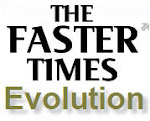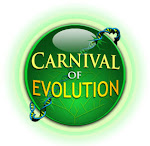Interesting Article;
Abstract:
The evolutionary rates of protein-coding genes in an organism
span, approximately, 3 orders of magnitude and show a universal,
approximately log-normal distribution in a broad variety of species
from prokaryotes to mammals. This universal distribution implies
a steady-state process, with identical distributions of evolutionary
rates among genes that are gained and genes that are lost. A
mathematical model of such process is developed under the single
assumption of the constancy of the distributions of the propensities
for gene loss (PGL). This model predicts that genes of different
ages, that is, genes with homologs detectable at different phylogenetic
depths, substantially differ in those variables that correlate
with PGL. We computationally partition protein-coding genes from
humans, flies, and Aspergillus fungus into age classes, and show
that genes of different ages retain the universal log-normal distribution
of evolutionary rates, with a shift toward higher rates in
‘‘younger’’ classes but also with a substantial overlap. The only
exception involves human primate-specific genes that show a
heavy tail of rapidly evolving genes, probably owing to gene
annotation artifacts. As predicted, the gene age classes differ in
characteristics correlated with PGL. Compared with ‘‘young’’ genes
(e.g., mammal-specific human ones), ‘‘old’’ genes (e.g., eukaryotespecific),
on average, are longer, are expressed at a higher level,
possess a higher intron density, evolve slower on the short time
scale, and are subject to stronger purifying selection. Thus, genome
evolution fits a simple model with approximately uniform rates of
gene gain and loss, without major bursts of genomic innovation.
Read the rest here;
The universal distribution of evolutionary rates of genes and distinct characteristics of eukaryotic genes of different apparent ages
Thursday, April 9, 2009
Subscribe to:
Post Comments (Atom)





























No comments:
Post a Comment